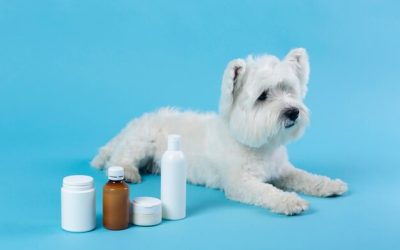Top 10 Common Poisons for Dogs and How to Avoid Them

Your home should be a comfortable space for you and your pet, but many everyday items can pose significant risks to your dog’s health. For example, certain foods and common cleaning products may have hidden dangers that every pet owner should be aware of.
One of the biggest threats comes from human food. While you may enjoy sharing snacks with your pup, some foods that are perfectly safe for humans can be extremely dangerous for dogs. For instance, chocolate contains theobromine, a compound that dogs process much more slowly than humans. Even small amounts can lead to serious health issues, including heart problems and seizures.
Household plants are another common hazard. Popular decorative plants such as lilies, sago palms, and some ferns can cause severe health reactions if ingested by dogs. Before bringing a new plant into your home, make sure it’s pet-safe.
How Toxins Affect Dogs: Understanding the Risks
Various toxins affect dogs in different ways. Some poisons target the nervous system, causing symptoms like tremors or paralysis. Others attack vital organs like the liver or kidneys, leading to long-term complications. Certain substances, even in small amounts, can be lethal, which is why understanding their effects is crucial for pet owners.
Dogs that ingest toxic substances may experience symptoms like vomiting, diarrhea, lethargy, difficulty breathing, or even seizures. Recognizing these signs early can make all the difference in ensuring your dog gets the prompt care they need.
Top 10 Common Dog Poisons
- Chocolate – Can cause vomiting, seizures, and heart issues.
- Xylitol – A sugar substitute found in sugar-free products that can lead to liver failure.
- Grapes & Raisins – Can cause sudden kidney failure.
- Onions & Garlic – Can damage red blood cells, leading to anemia.
- Antifreeze – Has a sweet taste but is highly toxic, causing fatal kidney failure.
- Rodenticides – Rat poisons can lead to internal bleeding or neurological damage.
- Human Medications – Many over-the-counter drugs, such as ibuprofen, are toxic to dogs.
- Household Cleaners – Bleach, ammonia, and drain cleaners can cause severe chemical burns.
- Lilies – Can cause kidney failure if ingested.
- Caffeine – Found in coffee, tea, and energy drinks, it can lead to restlessness and heart palpitations.
Foods to Keep Away from Your Dog
While chocolate is well known as a danger to dogs, many pet owners don’t realize that other everyday foods pose similar risks. Even a small amount of grapes or raisins can cause acute kidney failure. Onions and garlic, whether raw, cooked, or in powder form, can gradually destroy a dog’s red blood cells, leading to anemia, and xylitol, a common sweetener found in sugar-free gum and peanut butter, can result in dangerously low blood sugar and liver failure.
The Danger of Household Plants
Certain plants, although beautiful, can be deadly to dogs. Lilies, sago palms, and azaleas are just a few examples of plants that can cause severe reactions if ingested. If you have a green thumb, make sure to research pet-friendly plants before adding them to your home or garden.
Medications and Chemicals: Keeping Your Dog Safe
Over-the-counter pain relievers, prescription drugs, and household chemicals can be life-threatening if ingested by dogs. To keep your pet safe:
- Store medications in high, secure cabinets.
- Keep household cleaners locked away or out of reach.
- Clean up spills immediately.
- Never give human medications to dogs without veterinary approval.
Recognizing the Symptoms of Poisoning
Knowing the signs of poisoning can help you act quickly if your dog ingests something toxic. Symptoms may include:
- Vomiting and diarrhea
- Lethargy or weakness
- Excessive drooling
- Pale gums
- Seizures or tremors
- Difficulty breathing
- Irregular heart rate
- Increased thirst or urination
Since symptoms may not always appear immediately, seeking veterinary attention at the first sign of trouble is critical.
What to Do in a Poisoning Emergency
If you suspect your dog has ingested something toxic:
- Remove the dog from the source to prevent further exposure.
- Try to identify the substance and how much was ingested.
- Call a veterinarian or pet poison control hotline immediately.
- Do not induce vomiting unless directed by a professional.
- If advised to visit a vet, bring any remaining poison, packaging, or a sample of vomit or stool.
The Role of Pet Poison Control
Having access to pet poison control resources can be life-saving. These hotlines provide immediate expert guidance on how to handle poisoning situations.
- ASPCA Animal Poison Control Center: (888) 426-4435
- Pet Poison Helpline: (855) 764-7661
While there is typically a consultation fee, the cost is minimal compared to the risk of losing a beloved pet.
Seasonal Hazards to Watch
Each season presents unique poisoning risks for dogs.
- Spring: Fertilizers, pesticides, and toxic spring-blooming plants like tulips.
- Summer: Insect repellents, blue-green algae, and citronella candles.
- Fall: Mushrooms, rodenticides, and antifreeze leaks.
- Winter: Holiday plants (mistletoe, holly), chocolate, and ice-melting salts.
General Treatment Principles of Poisoning in Dogs
As written by veterinarian Lauren Jones, VMD in the PetMD article:
“Each poisoning has a different recommended treatment protocol, but they share similarities. In general, poisoning cases will follow these basic guidelines listed below.
For most ingested substances: Emesis, or vomiting, is the preferred first treatment. The idea is to have your pet vomit any dangerous materials from their stomach before it is absorbed. Unfortunately, it is a race against the clock. Some substances will absorb faster than others, but in general, material remains in the stomach for approximately 2 hours.’
Usually, there are methods of inducing vomiting:
- Hydrogen peroxide works by irritating the stomach lining, which can trigger vomiting. However, this irritation doesn’t stop once your dog has emptied their stomach. In some cases, it can lead to prolonged discomfort, internal damage, and, in severe situations, life-threatening complications. That’s why you should never give your dog hydrogen peroxide without the proper guidance of a veterinarian.
- ‘Veterinarians prefer to use safer prescription drugs, under veterinary supervision, to induce vomiting. These can be administered intravenously or absorbed through the conjunctiva. These options are safer for your pet and allow for a veterinarian to examine and treat any other abnormalities.’
How Can Pet Insurance Help You if Your Dog Needs Treatment?
Pet insurance can be a valuable tool in managing the costs of treating a dog’s veterinary expenses. By having a pet insurance policy in place, you can have peace of mind knowing that you can provide medical care for your furry companion without worrying about the financial burden. Pet insurance can help cover the costs of veterinary consultations, diagnostic tests, medications, and even specialized treatments if required.
Reimbursement
This method is the most common for pet insurance companies. You pay out of pocket for the veterinarian bill, and then the insurance company reimburses you for what’s covered under the insurance plan. The steps look like this.
- You pay the vet bill after your dog’s visit.
- You fill out the pet insurance claim form.
- Submit the claim form and other required documentation to the insurer.
- After the claim is approved, you will be reimbursed for eligible expenses.
What Does Odie Pet Insurance Cover?
Pet insurance covers various veterinary expenses, providing financial protection and peace of mind for pet owners. Here are the details of the coverage options offered by Odie Pet Insurance:
Illness & Injury Plan
The Illness & Injury Plan is an all-inclusive insurance plan designed to cover a wide range of medical needs for your pet. This plan includes comprehensive coverage for various illnesses, injuries, and veterinary services. Some of the covered items include:
- Veterinary exams and consultations
- Diagnostics (e.g., X-rays, lab tests)
- Prescribed medications
- Surgeries and hospitalization
- Rehabilitation, acupuncture, or chiropractic treatments
- Medically necessary supplies
- Euthanasia and cremation
The Wellness Plan
The Wellness Plan is a monthly membership that focuses on preventive care and covers routine veterinary services.
- Provides reimbursements for routine care items such as wellness visits (exams and vaccines), testing and parasite prevention, dental cleanings and at-home dental care, vitamins, supplements, and more.
- Through Odie’s partnership with Petivity, a leader in smart pet products and proactive care, Wellness Plan members can also receive reimbursements for Petivity devices and health kits, as well as eligible Purina food and supplements.
- Total reimbursement up to $700 per year.



